Age: Infinity (Blues Report, For the Magazine’s Twenty-Year Anniversary)
Published in: 26. Non-Return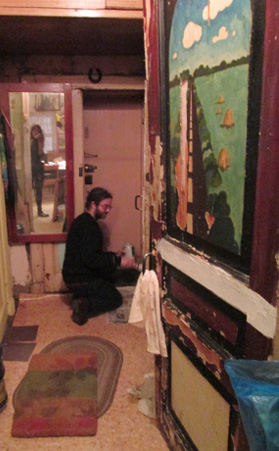
Steadily multiplying signs of changes spoke of impending renewal. The address remained familiar, evocative: beyond it lay a specific spot, kept open, in its prehistory, to foster creative ferment and high spirits among those who knew the route and accorded it exceptional meaning. A dimension dependably reached through the looking glass, a sanctuary earlier undisclosed by outward indications. Qualities crucial for its identity declared themselves only from within, past the threshold, although this domain was equally a microcosm of how its host city — Petersburg-Leningrad-Petersburg — imbues even the commonplace with beauty, naturally inspiring lifelong service of the ideal.
But not long ago, where a plain front door faces a worn stone landing, a small plaque was hung. Its calligraphic combination, familiar to many, confirmed the tie conceived some twenty years before. The space within houses an editorial office belonging to Apraksin Blues. The Petersburg office. The latter clarification matters in part as for many years this office has been neither the only nor the main one for the magazine’s work. But the space will always have its primacy as the first base of AB‘s activity at the magazine’s 1995 inception. A headquarters inheriting the whole line of uncompromised free thinking that sojourned and sheltered within these walls for a couple of decades beforehand. It was no fluke that fate put an allusion to Apraksin Lane in the publication’s very name. So it’s all the more important — as the plaque makes easy to guess — that visitors are encouraged to come here ON BUSINESS. The MOST IMPORTANT BUSINESS. Whatever it takes. In the best traditions of tenacity that cultivated the magazine itself.
Apraksin Blues, its Petersburg office… “Madame Apraksina’s Salon”… “Apraksin Palace”… Each person who has known it has known it differently, subjectively… “A riddle wrapped in a mystery inside an enigma,” Winston Churchill once said of Russia. His words could hardly apply better than to these mysterious square meters on Apraksin Lane. In interim years, many of those familiar with this place kept silent about it or delivered contradictory reports. Some, passing by, preferred a simple, respectful doffing of a hat in tribute to the remembered past, not reflecting on potential grounds for such gestures in the present. Rare eyewitness dispatches had sometimes been radiant, sometimes lamentable. Yet the time came to reconcile the place with its actual meaning. Not only to pass by on the street, not only to speculate about this place or accept the results of its alteration, if entrance was sought and gained, but to establish order rightfully, to begin interacting and recalling, ever more vividly, the elevation once enthroned here, and to think about what else to revive or create anew… And burn incense…
The walls began coming to life…
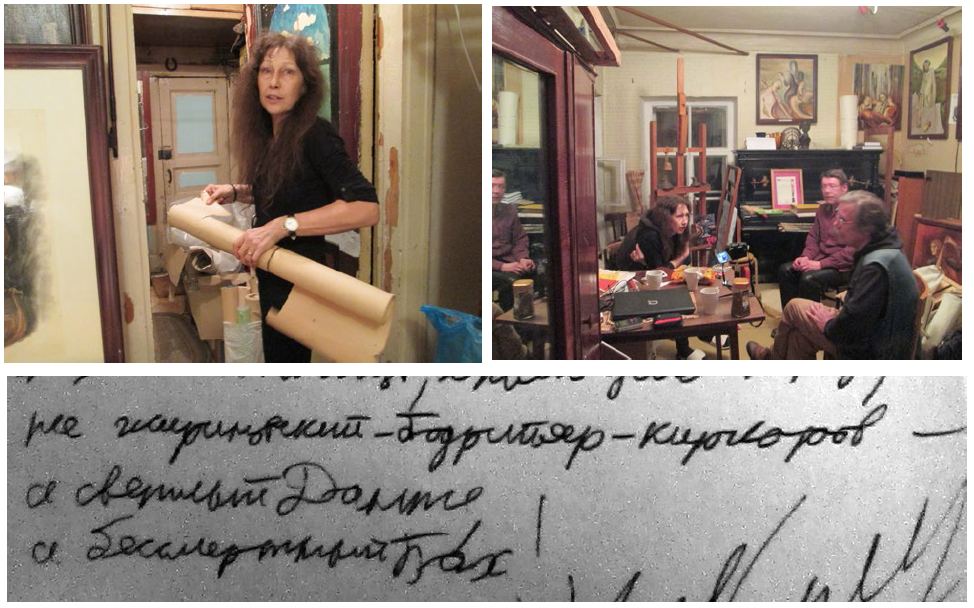
This process had many participants, including a group of Buddhists, yet centered on those who now form the nucleus of the Petersburg editorial team.
It was of course a bold move to plan the first set of celebratory Blues meetings right here, with this office far from orderliness or renovation, just a week after the chief editor’s flight in from California. But the tide infallibly led toward this goal.
A final step — the first in sixteen years — over the threshold, through air dense with meanings, and then the sudden opening of a view from within, another physical and mental shift. A group of paintings in an unexpected configuration, an easel looming like a bell tower; special reprints of Apraksin Blues issues, prominent among them the most recent, its cover art a watchful number “25” — a speed marker from an American road’s asphalt. And opposite, stretched arrow-straight, a painted road in a flaking mural on the office door’s inner side. Always the same road…
And always the same work, and always mountains of it. Labor both physical and mental. Work that qualifies as dirty. And only a miracle might give time and strength to cope with all that needs doing.
Conversations paralleled efforts to restore and clean. A hand extended in any direction uncovered incredible troves of the temporal and eternal — with each new layer, more and more.
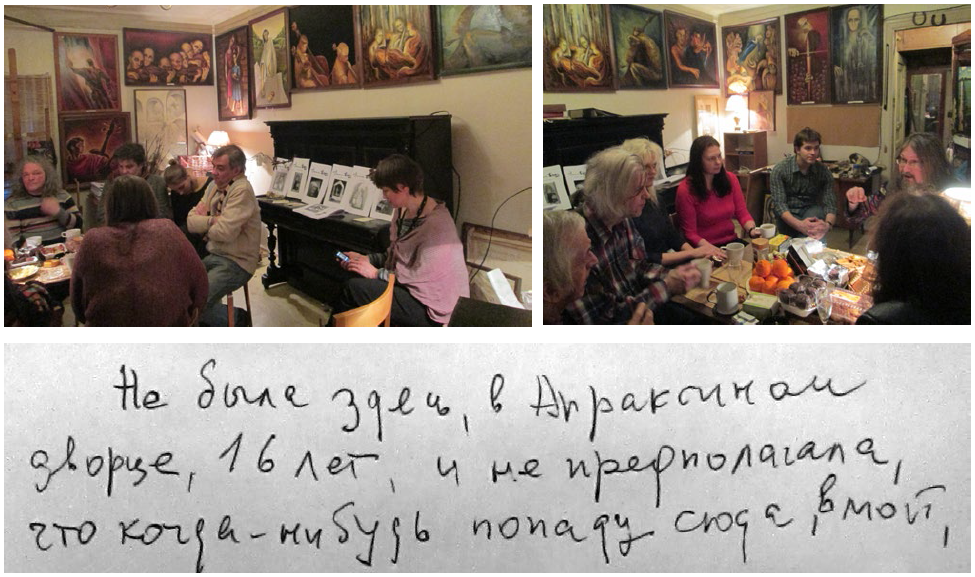
By the exit, piles formed of bags and boxes full of garbage and condemned objects, the latter often still recognizable as treasures gathered over years. Each visitor leaving editorial quarters would choose some feasible load for disposal, clearing a passage for the next person to enter.
Further operations for hands and heated exchange: ripping unseemly wallpaper from the walls… scrubbing the floor… hauling the Blues archive, paintings, heavy furniture from place to place to accommodate the aforementioned, then into a rethought arrangement. With this accompaniment, discussions with authors and partners acquired particular levity and incisiveness. A fine example of this was supplied by a philosopher who deftly purged broad patches of wall of the alien tastes imposed on them. And other new help came day by day, at any given hour: to move the piano, smear paste on strips of fresh golden-hued wallpaper and mind the needs of the soul. People who simply sat and chatted contributed just as much to upholding existence.
Little time remained for much else besides this. Excepting, say, a visit to the House of Composers, whose director welcomed a late meeting, suiting his plans for nocturnal diligence. Not to miss was the unforgettable presentation of the book On the History of Unoffical Culture at the Fountain House. These events organically complemented the course of occurrences on editorial territory.
Informal meetings, often with spontaneous participants, could run long iento the night. The packed regime encouraged talk of long-contemplated, vital things, as with the Mike Naumenko-themed interview that a musician/writer came to take late one evening. With him surprisingly tagged along a storied rock-and-roll photographer, acquainted with the route to the door on Apraksin Lane, as well as the road in the inner office door’s now-antiqued mural, in his first years of breaking ground in his life’s beloved craft. What an intriguing selection of people saw this space in the middle of struggle with chaos! — chaos of matter and mind, chaos spawned by calculation and misconception. By the next day, the atmosphere exposed to the famed lense had changed almost beyond recognition — yet photographs and fertile memories survive as evidence.
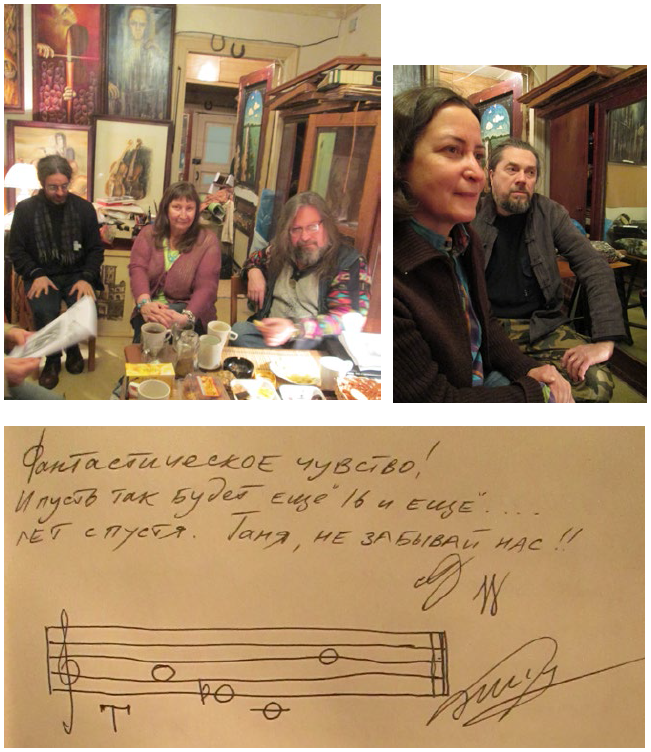
The paintings need separate description. The main thing is that they are alive, that the musicians on canvas continue to play. And to this artwork is now added a new, foreign scene: “Season of Bluebirds,” painted in California and flown to Petersburg to mark the exceptional moment of the Pacific Ocean mingling with the Fontanka. Will it fit? Hopefully!
At one of the main meetings in the editorial space, someone said, concerning the paintings, that the past decade and a half of art, seemingly attractive, stimulating, important when first seen, now felt like nothing in view of them — paintings now visible as they really are.
For the first editorial office meeting, needing no coordination to coincide, visitors brought along willow bouquets. Blooming willow branches were on sale all over the city. It was Palm Sunday! The day for entering Jerusalem.
For the two official gatherings, open receptions were declared, lasting from the middle of the day until infinity, two days straight. The intercom beeped almost incessantly. Onetime participants in the site’s prehistory typically voiced an impression that it was “as if no time had passed.” Yet how could time not have passed? What had it been spent on? And if it hadn’t passed, was there much more time than it had seemed?
As conversations continued, hope began outweighing doubt. The polyphony of articulated thoughts proved uplifting to a point of total certainty. If everything was so good right then and there, things must be well and good on the whole. Only “let’s have more such meetings!” as one author noted in the office’s reanimated guest book. Any one of the parallel discussions made for engrossing listening, any of them (concurrently, too) invited participation. Many made use of this — not wanting to neglect the chance to speak with everyone encountered in this lively interplay of intellectual music-making, akin to what has always marked the pages of the magazine. How fascinating and beautiful to see a scientist listening carefully to a poet, or a literary scholar trading opinions with a baroque musician, moreover, whose ensemble played a farewell concert here sixteen years past!
The meetings took place in an intentionally freewheeling form, with no agenda, giving everyone a chance to be themselves in the best sense. The context itself was a reminder of the event’s unusual, pivotal character.
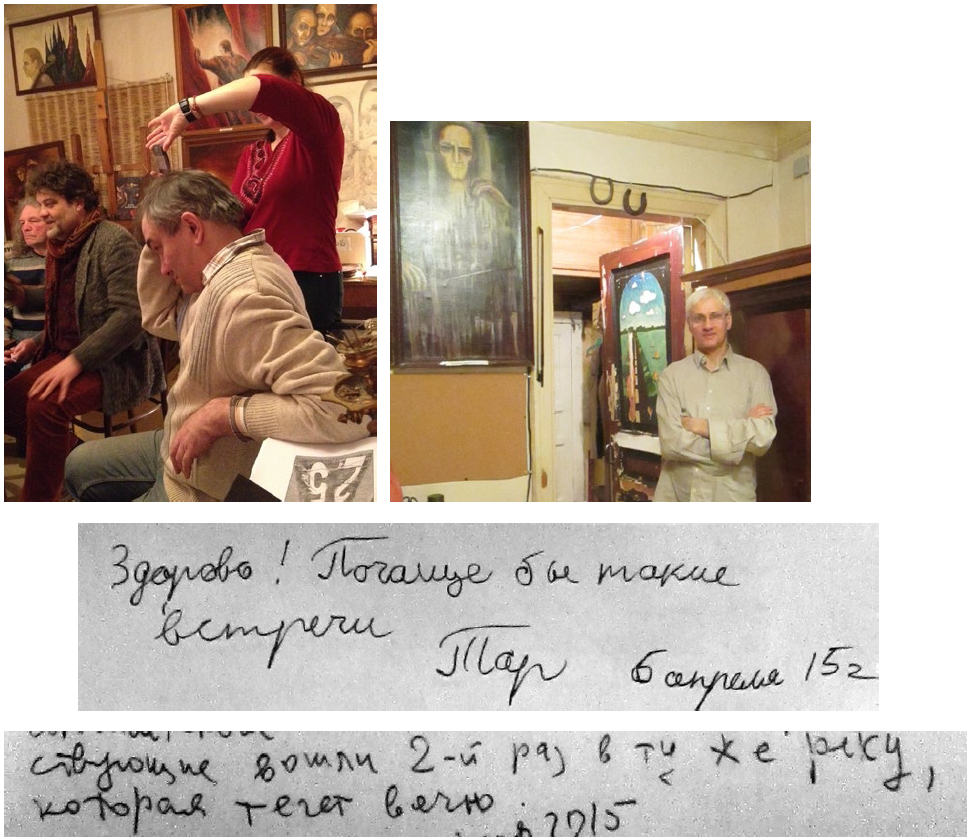
And there was more than enough to talk about. Preserving literature’s heritage, what a new literature might be…analysis of poetry translations…comparing cultures and destinies of peoples…the meaning of humans in nature and nature in humans…the prospects for intellectual freedom framed by formal requirements… And all sorts of problems of creativity. At times it seemed the surging waves of such topics could no longer fit the modest space and all would soon crushingly collapse. But just as the intricate fugue of voices reached its culmination, simplicity would suddenly return to the score, and some lone voice would make a fresh announcement of the Theme.
To some it might have seemed, as it also can in reading the magazine, that the chief editor prefers not to set conditions for events as they unfold. And yet certain moments dispelled such illusions. Twenty years of “Blues” history support the correctness of the priorities declared for the publication at its founding. Today we can all confirm that none of the materials first printed two decades ago in the magazine shows even the slightest signs of aging, and neither does the intensity of our meetings — which always contain “what stays alive because of being born alive. It’s the living grain of life that stays alive forever.”
What is the result of the Petersburg transformations, which bring an energy circuit full circle to the point where it began? The result is a unified “School of Anonymity” (see AB №19): a living repository of knowledge pertaining to ethical anonymity — not precluding personality, but also not confining it. The co-drafters of the “rational code of mutual transformation. Mutual communication” (see also №19) have always been entirely concrete people, making their unique and immeasurable contribution to an ineluctable whole.
Of course, much undone business still awaits its turn. Two weeks hardly allow enough time for epoch-making accomplishments. But one of the acts seen through to completion was the repainting of the inner front door. White (according to N. V. Serov) is the color of the contemplated past. (A technical remark: American oil-based paint bears no comparison with its Russian counterpart’s quality as upheld to date.) The very first coat of whiteness lent the object a new, profound, beautiful Meaning. The door hadn’t undergone any such procedure in ages. During the days of meetings, many hands left prints on it, overlaying former traces. Some may have touched their own fingerprints, left here before the sixteen-year blockade. Some people’s contact might have taken place nowhere else but on the faces of this door… But this is now contemplated past. Whitened. And the work of substantive hands of concrete, thinking people, coming here on business, starts anew, to see new meaning gained.
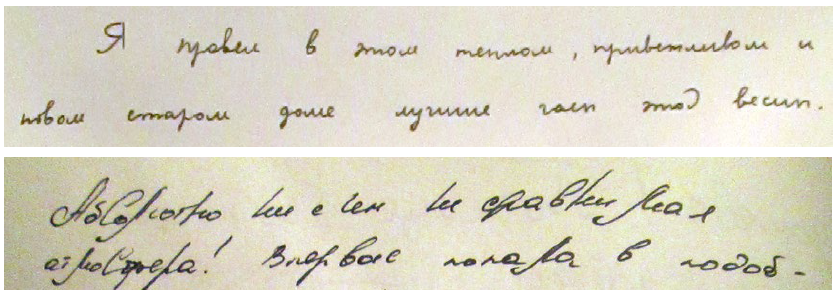
May this meaning give all things a true standard — including that white door, bound to bear more traces of age and infinity. From the one door’s whiteness to the road inscribed on the other. Then back again. From meaning to meaning. Over and over. Here: namely this path may be called Apraksin Blues. That the name denotes not only a society of ideas and ideals, but also an alliance of actual physical coordinates, is an occasion for deep gratitude — today and throughout the unfolding future.
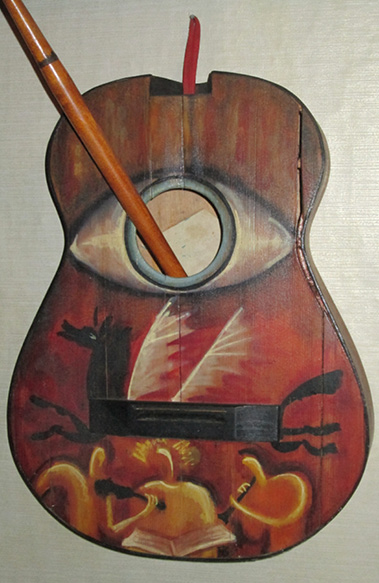

Thank you, James, for providing your creative overview of the magazine’s history and the celebration revealing ongoing commitment to the values of the publication and its contributors. I’ll look forward to reading more of your English translations and will continue cheering the articles you and the other staff members contribute in the Russian language.